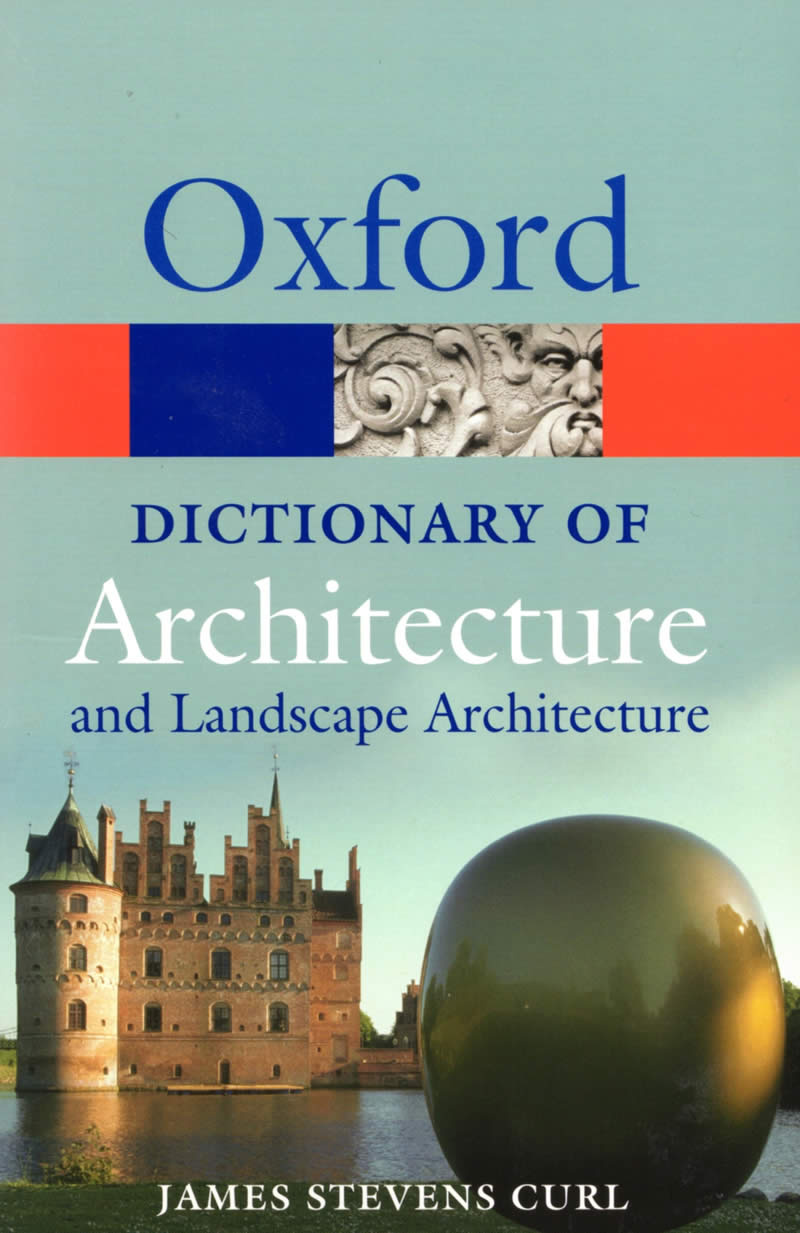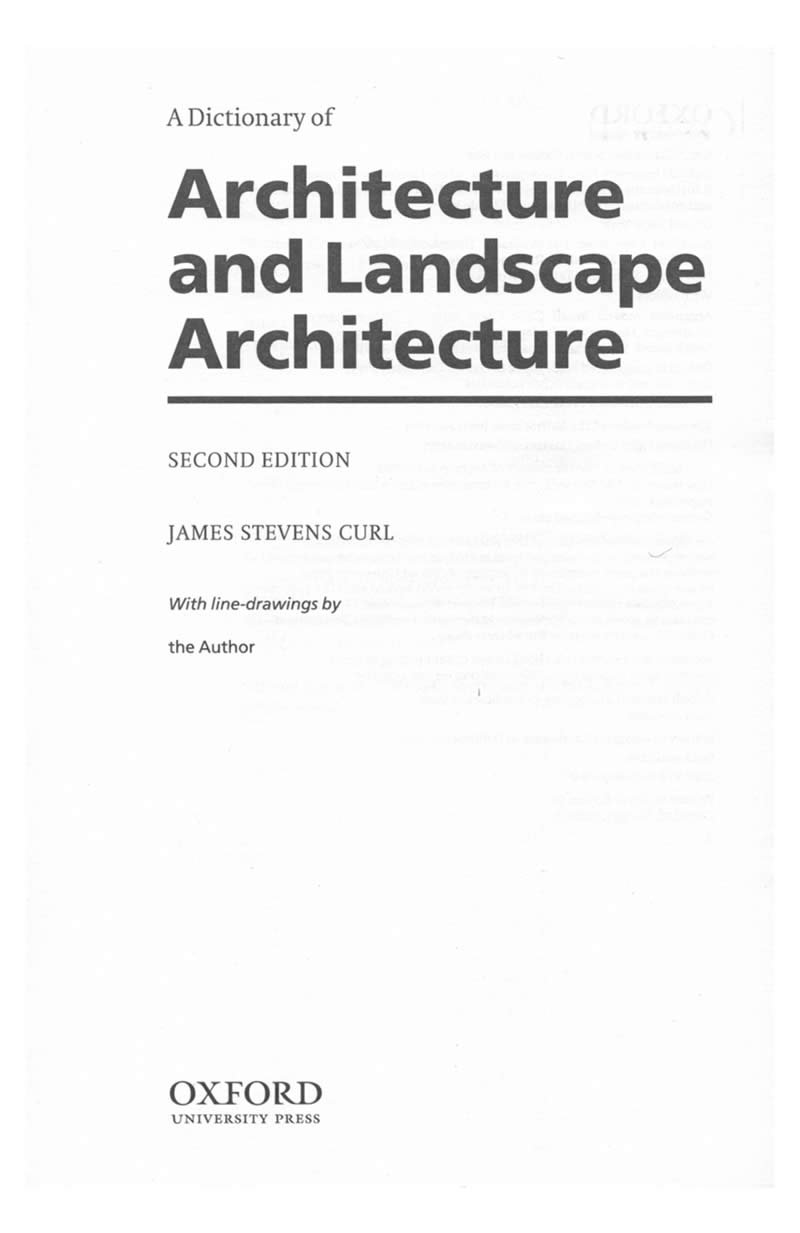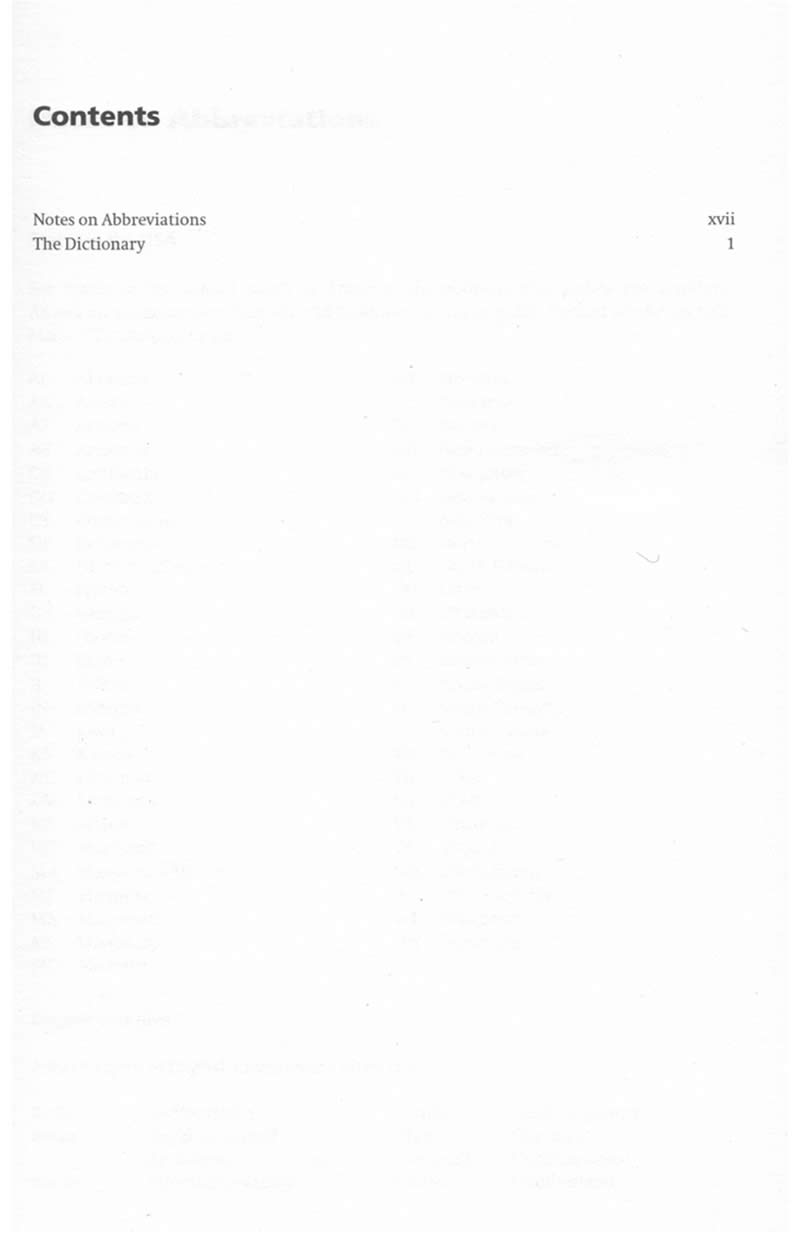A Dictionary of Architecture and Landscape Architecture

Author : James Stevens Curl
Publisher : Oxford: Oxford University Press, 2006
ISBN: 978-0-19-280630-7 (hbk)
ISBN: 978-0-19-860678-9 (pbk)
Containing more than 6,000 entries from Aalto to Zwirner, this authoritative and accessible dictionary, a concise resource for any student or interested reader, covers all periods of Western architecture, from ancient times to the present day. Written in a clear, jargon-free style, it includes brief biographies of leading architects (outlining the importance of each personality discussed and giving examples of his or her most notable buildings), architectural terms, short essays on styles in their historical contexts, and much else, complemented by over 250 annotated line-drawings by the author. It has been hailed as by far the best architectural dictionary available today in one single volume. Expanded to include many entries on landscape, this substantial volume has been critically acclaimed as an invaluable work of reference full of memorable aphorisms.
This book was expanded from earlier editions:
A Dictionary of Architecture (Oxford: Oxford University Press, 1999, ISBN: 0-19-210006-8 [hbk.]; ISBN: 0-19-280017-5 [pbk.]);
Dictionary of Architecture (Hoo near Rochester: Magpie Books, an imprint of Constable & Robinson Ltd., for Grange Books, 2005, ISBN: 1-84013-883-1 [pbk].).
Reviews
‘Anyone seeking a single-volume dictionary of architecture which includes biographical entries has, in fact, only one choice and that is Curl. The first edition of A Dictionary of Architecture was published by Oxford University Press in 1999 and was by far the best in the field, covering technical terms, styles, and building types as well as architects. The second edition, published last year, is even better. In fact it is a magnificent achievement – and never dull. Its strength is its broadness, for Curl is no modernist. Here, in biographical form, is a true history of the 20th century in all its stylistic diversity. So, in addition to the usual suspects like Le Corbusier, who are treated at length and very fairly, there are entries on such unorthodox but important figures as Bellot, Plečnik – who Curl rightly asserts “deserves to be ranked among the greatest architects of C20” – Piacentini, Tengbom, and Makovecz. Of course Curl (like Sam Johnson) is opinionated. That is part of the pleasure, so he writes of that Italian exponent of Novocento, Giovanni Muzio, that his association with Fascism “led to his interesting, even brilliant, architecture being ignored or denounced after 1945, but it has been reassessed by more open minds”. [Curl as] lexicographer is catholic and immensely knowledgeable... Once you have Curl’s Dictionary on your shelf, it rapidly becomes indispensable.’
‘Anyone seeking a handy guide to bricks and brick bonds, explanations of the Classical Orders or Gothic period styles, or the component parts of an arch, will find admirably clear and economically executed diagrams... it will no doubt be used extensively by architects and architectural historians, and the constant reminders that the settings of buildings also have a history... can only be salutary.’
‘This book is a mine of information, and… one has the impression that, despite the phenomenal task involved, Professor Curl has had more than a few moments of fun compiling this volume. The scope of the dictionary is immense, covering every period of Western architectural development…, entries are both succinct and comprehensive, …and… one of the merits of the dictionary is the sheer convenience of finding, in précis form, a list of key works, dates, the correct spelling of names, and useful bibliographic references if further information is required. … gentle taunts keep the text alive and encourage the reader to explore further. This is a volume huge in scope, with over 6000 entries, and yet it is a manageable size and easy to handle. The book is well laid out with a clear typeface and simple graphics. All the illustrations in the book are line-drawings by the author, and contribute greatly to clarity and understanding. The dictionary is comprehensive, easy to use, and well priced. Here are definitions, précis of styles and movements, mini-biographies of the well known and not so well known, and a lifetime’s experience and enthusiasm brought to one volume … Curl has produced something hugely enjoyable, informative, and useful.’
‘In compiling his dictionary, the author has drawn widely and wisely on the lexicographies of the past, elucidating the phraseologies of early pattern books and manuals, and referring to recent specialist publications. He explains slackly used words carefully as well as introducing obscure terms with clarity and concision. Each word is defined on its own terms and does not presume a level of knowledge among readers. The dictionary is thus more than a compendium of facts and data. It is a lively, cross-referenced and succinct guide to architectural terminology, embracing a pleasing range of terms associated with building conservation and landscape architecture… As the author states, “terms are one thing, biographies another”. It is refreshing to note the introduction of many lesser-known 20th century architects and a number of exponents of the repair and conservation of historic buildings… Given the concise nature of this publication, the dictionary is astonishing in its scope. It is dense with important details, and at the same time fluent and accessible. It will be of invaluable assistance in writing reports, preparing publications, or as a quarry for brief biographies of the work of major architects and others. In itself it is a fascinating survey of architectural achievement.’
‘The best introduction to a broad understanding and appreciation of architecture is a good dictionary. James Stevens Curl’s is one of the best available… Curl has… produced a comprehensive work that will not quickly be superseded… We have here not merely a glossary of architectural terms and building types, but concise biographical entries, disquisitions on architectural movements and styles, and explanations of building techniques that cover every period of western architectural history. Curl’s dictionary includes over 6,000 entries, fully cross-referenced, and has over 250 fine illustrations drawn meticulously by the author himself…. An annual pleasure for those on his Christmas card list are Curl’s exquisite architectural fantasies that deserve to be collected in a book of their own… Then there are the biographical entries, and in them this dictionary excels… All the architects that one has generally heard of are there but there are innumerable others that lie in obscurity ... Founded on formidable knowledge, judgment, and reading, Curl informs and delights… there is no better source of architectural reference available at the price.’
‘A formidably informative yet admirably user-friendly work … this book will be a real boon for the architecture aficionado.’
‘Along with pithy technical definitions, the 6,000 entries here include succinct coverage of styles and periods. Curl’s aphoristic style is best employed in his micro-biographies. Frank Lloyd Wright’s writing is described as suffering from “rather obvious conceit, prolixity, and dense obfuscation”. Curl finds room for Mies’s Nazi links and Le Corbusier’s plan to replace central Paris with 18 skyscrapers. The brief entry on Frank Gehry describes a Seattle project as “one example of Blobismus too many.”’
‘This is a second edition of a much praised classic, that rare thing, an encyclopaedia with flair, accuracy, and authority but with a distinctive authorial voice.’
‘This is incomparably the finest dictionary of architecture in existence... Professor Curl prefaces his great work with Dr Johnson’s claim that writers of dictionaries are “unhappy mortals” because, while “every other author may aspire to praise, the lexicographer can only hope to escape reproach”. It says much for Curl’s prose, as well as for his vast scholarship, that this book escapes reproach entirely and deserves the highest praise a reviewer can confer.’




 LinkedIn
LinkedIn  Wikipedia
Wikipedia